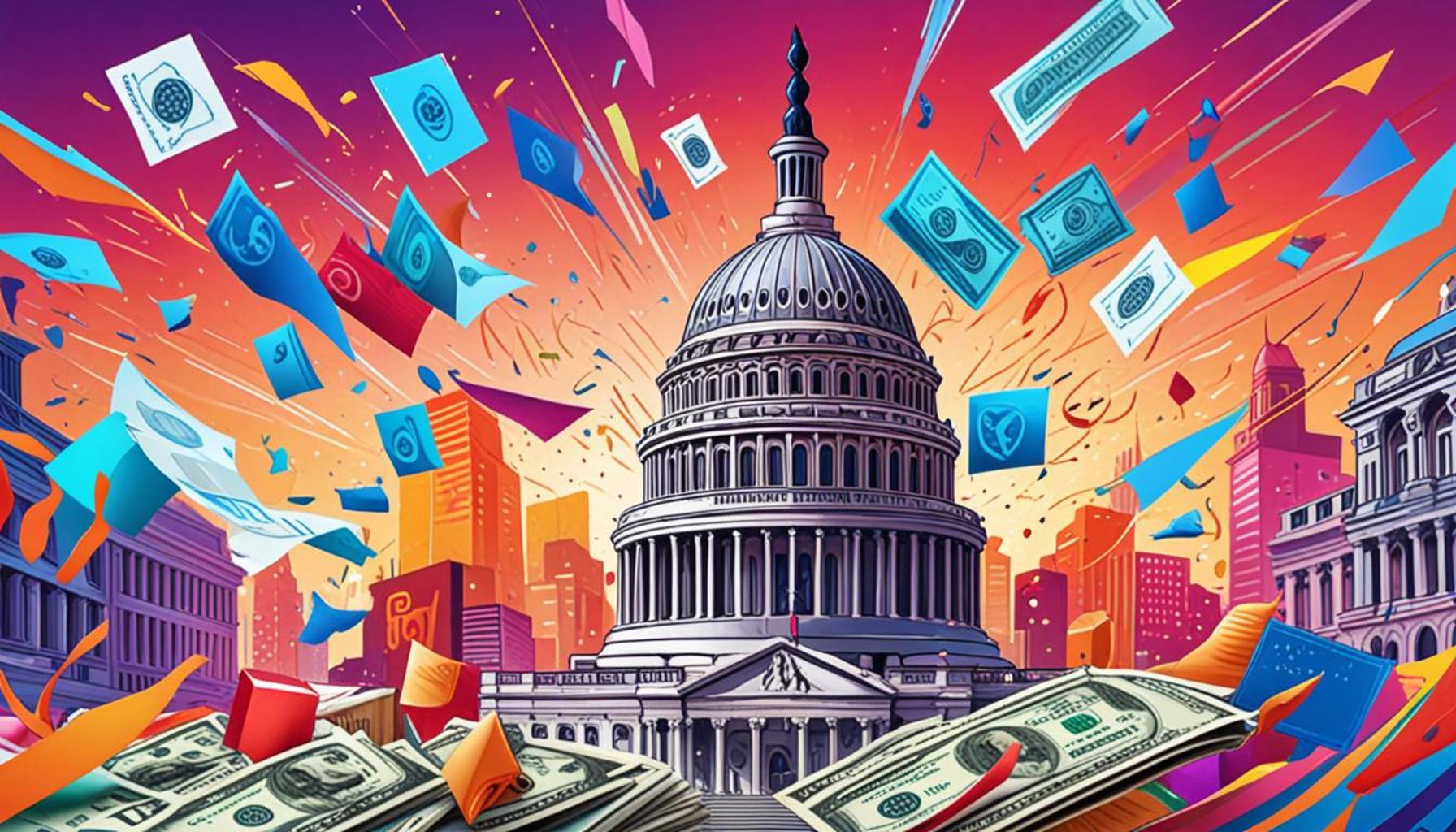Brand Promotion Strategies to Maximize Government Tax Incentives

The Importance of Brand Promotion Strategies
In the fast-paced business environment of the United States, effective brand promotion strategies play a crucial role in boosting visibility and driving engagement. Companies are continuously searching for innovative ways to reach consumers while simultaneously maximizing their financial advantages through government tax incentives. These incentives aim to stimulate economic growth, particularly among small and medium-sized enterprises (SMEs), which are vital to job creation and community development.
One of the first steps in harnessing these opportunities involves understanding the various avenues available for collaboration and support. So, how can your brand effectively tap into these growing resources? Here are some strategies to consider:
- Partnerships with Local Governments: Forming alliances with local government entities can benefit your brand immensely. Participating in community development projects, such as revitalizing local parks or sponsoring educational programs, showcases your commitment to social responsibility. This not only enhances your brand reputation but may also qualify your business for grants or subsidies provided by government initiatives aimed at improving community engagement.
- Tax Credit Programs: It’s essential to remain aware of local and federal tax credit programs, particularly those that incentivize research and development (R&D) and job creation. For instance, the federal R&D tax credit allows businesses to claim a percentage of qualifying expenses related to innovation. Furthermore, various states offer their own credits, such as California’s Cal Competes tax credit, which serves to attract and retain businesses within the state.
- Incentive-Based Marketing: Tailoring your marketing campaigns to highlight your eligibility for tax incentives can set your brand apart in a competitive landscape. For example, if your company qualifies for a workforce training program, you could create targeted advertising to showcase this benefit to potential customers. This not only positions you as a forward-thinking business but also simultaneously broadens your appeal by aligning with consumers who prioritize supporting socially responsible companies.
Moreover, adopting a strategic, well-informed approach allows your business to stand out in a saturated marketplace. By aligning your marketing initiatives with available tax benefits, you not only promote your offerings but also cultivate a financial advantage that can be reinvested into further growth opportunities.
It’s imperative to stay ahead of the curve by continually educating yourself about evolving tax legislation and emerging opportunities. By embracing these detailed strategies, your brand can effectively leverage valuable resources that foster both growth and sustainability, ensuring a competitive edge in today’s dynamic business environment.
RECOMMENDED: Check out this similar article
The Intersection of Brand Development and Tax Strategy
In today’s dynamic business environment, understanding the myriad of available government tax incentives can significantly impact a company’s financial health. However, it’s not just the financial aspect that matters; how a business promotes its brand in conjunction with these incentives can propel growth and engagement. By strategically leveraging tax benefits through robust brand promotion, companies, particularly small and medium-sized enterprises, can not only reduce their tax burden but also enhance their market presence.
Government subsidies, tax credits, and grants create opportunities for businesses willing to take the time to research and apply for them. The benefits of these incentives are not just about immediate financial relief; they can also form the foundation for cultivating a strong brand identity and community engagement. Let’s delve deeper into key strategies to fully harness these advantages:
- Educating Your Team: One of the most effective ways to ensure you capitalize on tax incentives is to cultivate a knowledgeable workforce. Conducting regular workshops or inviting experts to speak can make your employees aware of programs like the Research and Development Tax Credit, which plays a crucial role in innovation for technology and creative sectors. Empowered employees can identify opportunities that may otherwise go unnoticed, allowing your business to fortify its financial situation and reinvest savings into further brand initiatives.
- Utilizing Digital Platforms: In an era dominated by digital communication, businesses can use their online presence as a powerful tool to promote tax incentives and engaged consumers. Social media platforms can serve as channels to share creatively designed infographics or video content explaining how your brand benefits from government programs aimed at economic empowerment. For instance, a small manufacturing firm could showcase its use of sustainable practices, thereby attracting eco-conscious customers while highlighting its eligibility for incentive programs designed to promote green initiatives.
- Collaborative Marketing Efforts: Networking with local businesses can further enhance your brand while increasing access to tax benefits. For example, a community-focused campaign, such as a local arts festival, can receive grant funding if it resonates with local government priorities. Your corporate participation in such events not only boosts goodwill but can also position your brand for tax incentives tied to community development and artistic initiatives.
Moreover, aligning your business mission with government objectives can strengthen your promotional strategies. If your brand is focused on social responsibility—or contributing to initiatives like workforce development—showcasing these commitments in marketing materials not only enhances your public image but also supports your eligibility for associated tax benefits. For instance, engaging in programs that encourage youth employment can open doors to tax credits while projecting an image of a socially responsible brand.
Ultimately, a comprehensive understanding of tax incentive programs enables businesses to craft promotional tactics that resonate with consumers and foster loyalty while efficiently managing financial obligations. As the regulatory environment continues to shift, maintaining a proactive stance and a keen awareness of emerging opportunities ensures your brand can thrive—not just survive—in a competitive marketplace.
The intersection of effective tax strategy and brand development is not merely a financial tactic; it’s a strategic maneuver that can elevate a company’s profile and cement its place as a leader in its respective industry. As businesses continue to seek innovative ways to engage with their audience, understanding and promoting their eligibility for tax programs can serve as a significant advantage.
| Strategy Category | Advantages |
|---|---|
| Targeted Advertising Campaigns | Increased visibility for eligible programs, enhancing consumer awareness and engagement. |
| Partnership with Local Influencers | Leverage community trust to promote tax incentive programs more effectively. |
| Digital Marketing Strategies | Cost-efficient reach to a broader audience, maximizing returns on investments made toward tax incentives. |
| Workshops and Seminars | Educational opportunities that empower businesses to take full advantage of available tax incentives. |
The right blend of brand promotion strategies can significantly amplify the potential benefits derived from existing government tax incentives. Utilizing methods such as targeted advertising campaigns can enhance visibility for such programs, creating greater awareness among consumers and increasing participation rates. Moreover, partnering with local influencers allows for a more authentic approach to promote these incentives within the community, leveraging the established trust these figures hold.Digital marketing strategies are pivotal, as they provide a cost-effective means to connect with a diverse audience, ensuring that the message about tax incentives reaches potential beneficiaries. Further, organizing workshops and seminars can serve as a valuable resource for educating businesses about the intricacies of available tax incentives, ultimately encouraging them to make informed decisions that benefit not only their brand but also contribute to local economic growth. The amalgamation of these strategies provides a robust framework for maximizing governmental support through effective brand promotion.
RECOMMENDED: Check out this similar article
Maximizing Tax Incentives Through Innovative Engagement
As businesses strive to develop their brands while navigating the complexities of government tax incentives, innovative engagement strategies can play a critical role in both reinforcing brand identity and capitalizing on financial opportunities. Taking a multifaceted approach ensures businesses can combine promotional efforts with tax strategy to achieve significant market advantages. Here are additional tactics to consider:
- Leverage Community Partnerships: Forming alliances with non-profit organizations can not only enhance brand visibility but also unlock various tax benefits. For instance, businesses can partake in partnerships that lead to job training programs, community welfare initiatives, or educational outreach. By aligning with a cause that resonates with consumers, your brand can gain credibility and possibly qualify for tax deductions related to charitable contributions.
- Highlight Tax Incentives in Branding Elements: Incorporating government tax incentive information into your marketing materials can set your brand apart. By transparently displaying how federal and state programs support your initiatives—like job creation, environmental sustainability, or innovative product development—customers may be more inclined to support a business seen as socially aware and economically responsible. For instance, a firm receiving credits for green installations can promote these efforts through eco-labeled products or ‘green’ award displays in-store.
- Engage in Corporate Social Responsibility (CSR): Implementing a robust CSR initiative can greatly enhance your branding efforts while making your company eligible for various tax incentives. Engaging in sustainable practices, supporting local businesses, and investing in community health can illustrate your commitment to positive social impact. Programs that offer tax credits for energy efficiency can lead your brand to promote its efforts through campaigns emphasizing the importance of sustainability, thus appealing to a growing base of environmentally-conscious consumers.
- Showcase Success Stories: Sharing case studies or testimonials about how your company has effectively utilized tax incentives to innovate or grow can bolster your brand narrative. By using storytelling in your marketing, you humanize your brand while demonstrating responsible financial management. For example, a tech startup might highlight how funding from tax incentives helped launch new products that meet consumer needs, reinforcing their reputation as an industry leader.
Incorporating influencer marketing can also be a game-changer in promoting your brand’s relationship with tax incentives. Collaborating with influencers who understand or support your business’s mission—be it sustainability, community impact, or technological advancement—can bolster your message while tapping into their audience. This strategy not only maximizes outreach but also enhances trust, as consumers often perceive influencers as relatable and authentic.
Moreover, maintaining a comprehensive database of available incentives and their specific eligibility criteria enables businesses to engage in detailed planning. This proactive tactic allows companies to anticipate shifts in regulations and optimize their promotional efforts accordingly. In today’s world where market conditions can pivot unexpectedly, being agile in aligning your brand strategies with evolving tax opportunities is essential.
As businesses increasingly realize the intrinsic connection between tax strategy and brand promotion, they can cultivate a sustainable framework that not only boosts liquidity through tax incentives but also reinforces commitment to community engagement and corporate responsibility. By adopting these innovative engagement strategies, companies in the United States can uniquely position themselves, maximize their tax benefits, and subsequently grow their brand equity in an increasingly competitive marketplace.
CHECK OUT: Click here to explore more
Conclusion: Integrating Brand Promotion with Tax Strategies for Success
In the modern business landscape, the interplay between brand promotion strategies and government tax incentives has never been more crucial. As organizations seek ways to optimize their financial resources while enhancing their brand’s reputation, the strategies discussed emerge as powerful tools for achieving dual objectives. Leveraging community partnerships, promoting tax benefits in marketing materials, and engaging in corporate social responsibility not only foster a positive corporate image but can also unlock significant financial advantages.
Moreover, incorporating success stories and influencer marketing can emphasize your brand’s authenticity and resonate with a broader audience, ultimately leading to increased consumer loyalty. Understanding the complexities of tax incentives and maintaining an up-to-date database is essential for businesses to remain agile in an ever-shifting regulatory environment. This strategic foresight allows organizations to not only react to policy changes but to proactively align their promotional efforts with available benefits.
In conclusion, by merging comprehensive brand promotion with informed tax strategies, companies can create a distinctive presence in the marketplace that appeals to both consumers and stakeholders. Emphasizing sustainability, community engagement, and corporate responsibility not only enhances brand equity but also contributes to a more favorable business environment. As businesses in the United States embrace these innovative approaches, they position themselves to thrive amidst competition while maximizing their government tax incentives for sustainable growth.


